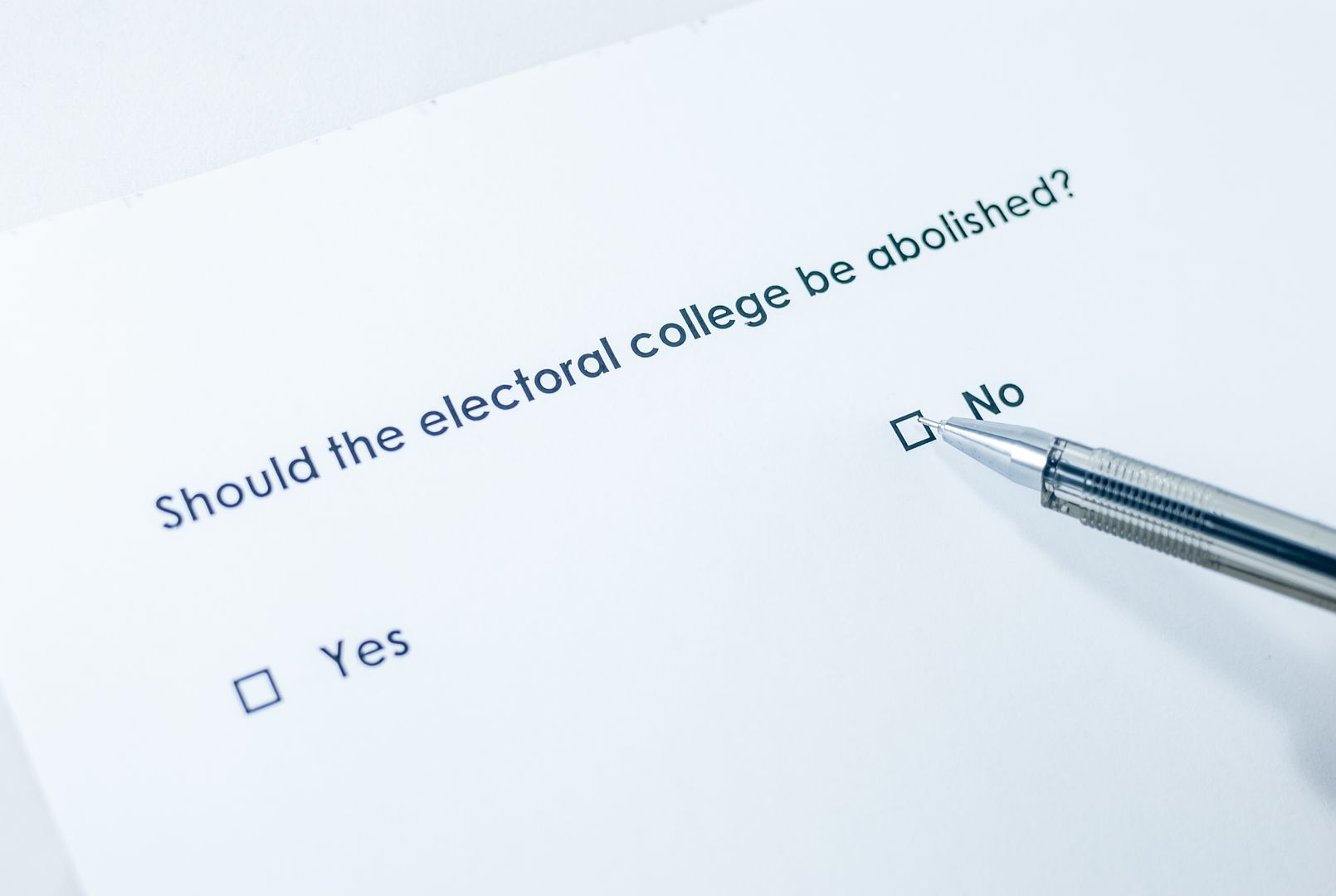Yesterday was April Fools Day, but the news that Democratic senators are planning to introduce a constitutional amendment to abolish the Electoral College is no joke.
According to NBC News:
Sen. Brian Schatz of Hawaii plans to introduce the measure [today] along with Sen. Dick Durbin of Illinois, the No. 2-ranking Democrat in the Senate, and Sen. Dianne Feinstein of California, the top Democrat on the Senate Judiciary Committee.
The Electoral College system has come under renewed attack recently from Democrats aggrieved that Hillary Clinton lost the presidency despite winning the popular vote.
Of course, in America we have never elected our presidents by popular vote. And with good reason. The framers of our constitution feared pure democracy, a system Benjamin Franklin once described as “two wolves and a sheep voting on what’s for lunch.” The founders, therefore, designed a government of checks and balances they hoped would limit the influence of popular passions and make sure that our leaders are responsive to diverse segments of the population.
The Electoral College is part of that intricate design. As any student of American government knows, each state has a number "electors" equal to its number of Representatives and Senators in Congress. In accordance with the 23d Amendment, the District of Columbia has three electors (the number it would be entitled to if it were a state). There are, thus, 538 electors in total, and a majority (270) are needed to win the presidency. When voters go to the polls in a presidential election, they cast their ballot for electors who have pledged to support a particular ticket in the Electoral College. [You can learn more about the Electoral College HERE.]
The idea was that this would prevent large population centers from dominating smaller, more rural areas of the country and prevent presidents from being elected with the support of only regional interests.
As Ryan McMaken explained in a blog post for the Mises Institute last year:
This makes it harder to win by doing what Clinton did during the campaign: focus on a thin sliver of rich Hollywood and business elites, coupled with urban ethnics. It's true that those two groups can offer a lot of votes and a lot of campaign dollars. But they also tend to be limited to very specific regions, states, and metro areas. The groups Clinton ignored: the suburban middle class and working class make up a much larger, more geographically diverse coalition. This can be seen in the fact that Trump won such diverse states as Alabama, Pennsylvania, and Wisconsin.
In 2016, the electoral college worked exactly as it's supposed to — it force[d] candidates to broaden their appeal.
Or, as Red Jahncke put it in the Hill, “[i]t prevented Hillary Clinton’s 6-million-vote victory in California and New York from cancelling her 3-million-vote loss in the 48 other states.”
Hillary Clinton certainly knew the rules of the game she was playing. Before 2016, there had been four U.S. presidents who won the Electoral College but lost the popular vote (including George W. Bush in 2000). I’m sure it was not lost on her that in 1992 Bill Clinton won the Electoral College in a landslide (capturing 370 electoral votes compared to George H.W. Bush’s 168), even though 56 percent of American voters chose someone else for president (37.4 percent chose Bush and 18.9 percent selected independent candidate H. Ross Perot).
Yes, Hillary Clinton knew the rules of the game. She simply didn’t play it well.
Nevertheless, sour grapes are now fueling Democrats’ efforts to amend the Constitution to do away with the Electoral College. But while their efforts are unlikely to get far in a Republican controlled Senate, the threat to our Electoral College system is real.
National Popular Vote, a well-financed progressive organization, has been spearheading a quiet, but effective, effort to circumvent the Constitution and eliminate the Electoral College through the back door. This group is promoting state legislative measures that would require that all of a state’s electoral ballots to be cast for the winner of the nation’s popular vote — even if a majority of voters in the state supported someone else!
So far, 13 states ( CA, CO, CT, DE, HI, IL, MA, MD, NJ, RI, NY, VT, and WA) plus the District of Columbia have signed on to the National Popular Vote Interstate Compact, which takes effect when the states representing at least 270 electoral votes have passed such measures.
As of today, the compact has 184 of the 270 electoral votes needed.
New Mexico (5 electoral votes) is about to become the 14th state to adopt the measure (pending the governor’s signature). And the legislatures of Oregon (7 electoral votes) and Nevada (6 electoral votes) and Maine (4 electoral votes) are considering similar measures.
Ohio (18 electoral votes) is considering a constitutional amendment (separate from the National Compact) to require giving that state’s 18 electoral votes to the winner of the national popular vote. That measure may go before Ohio voters in November.
So, while the debate about the electoral college may seem merely theoretical, voters should pay close attention to state legislative mischief to ensure that those who seek to unravel our battle-tested system don’t do a stealth end run around the constitution.



